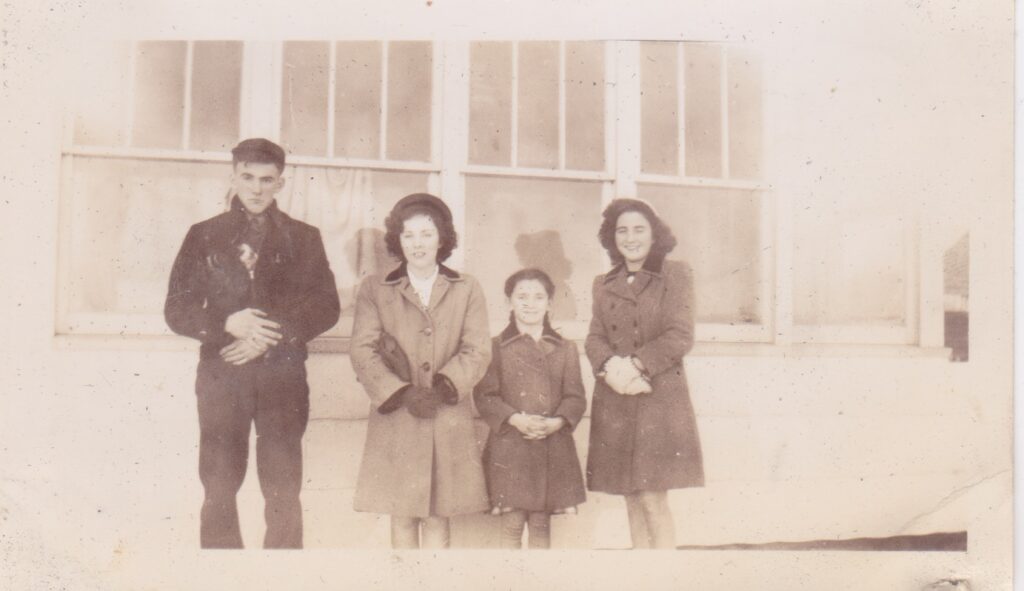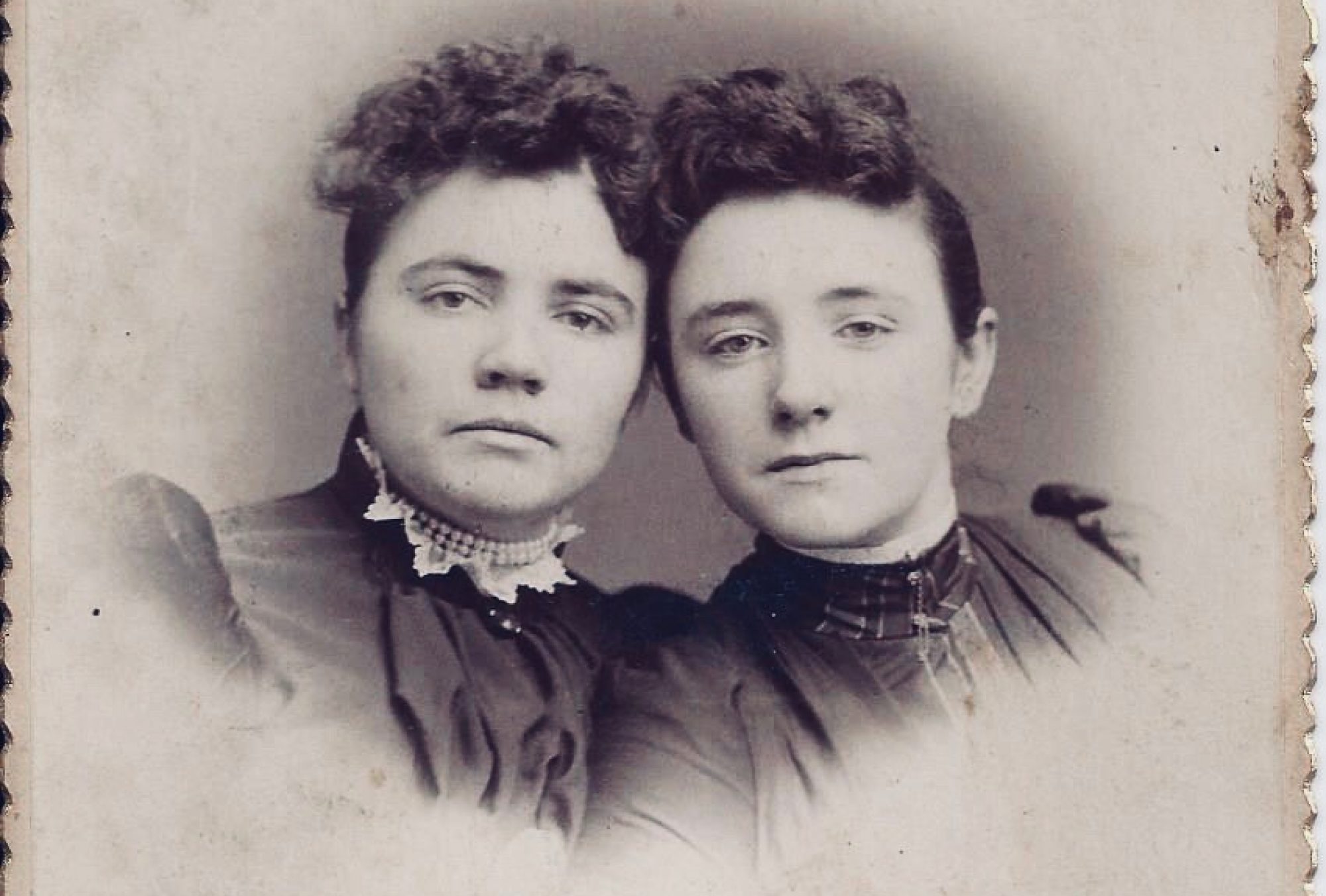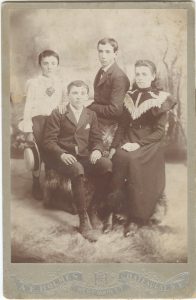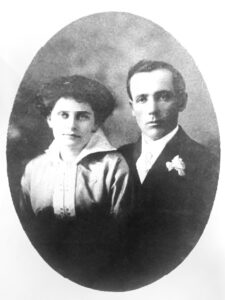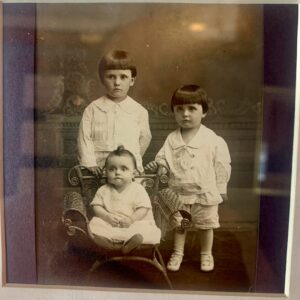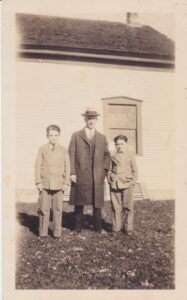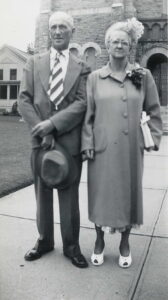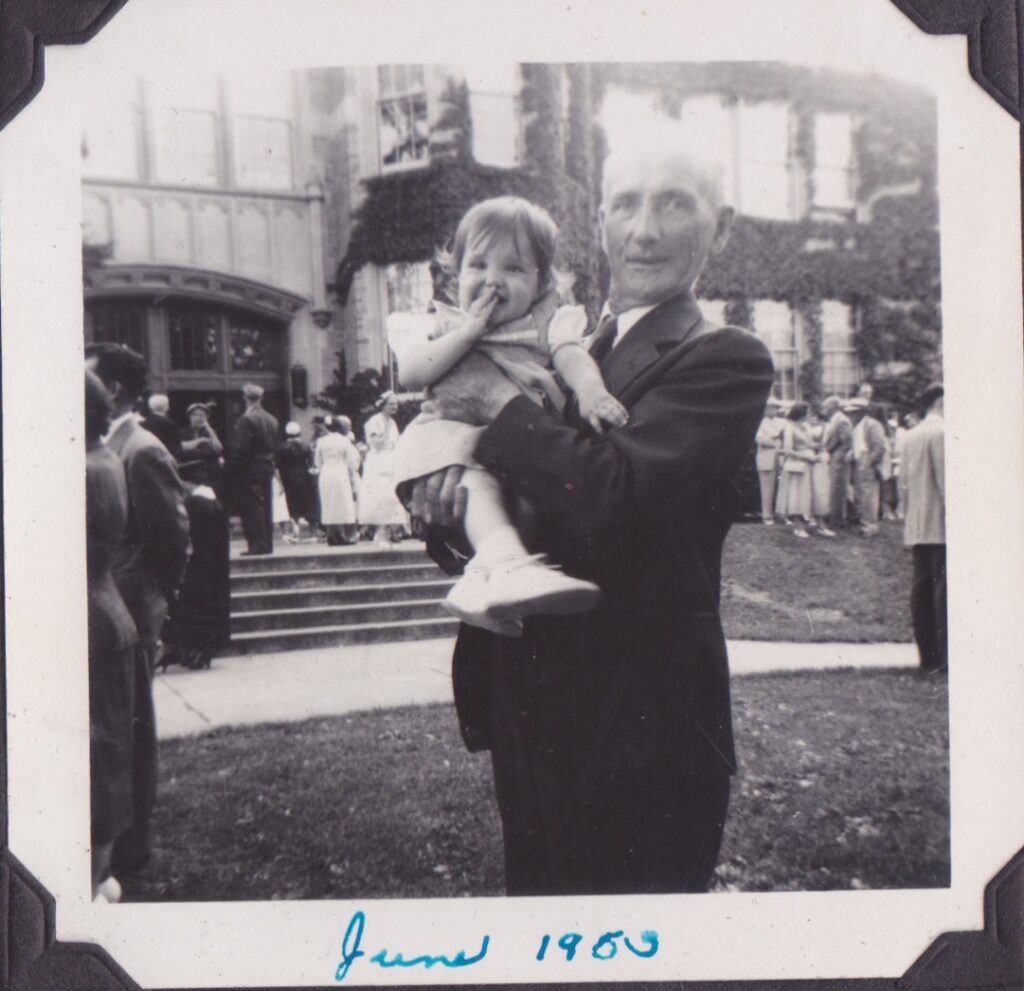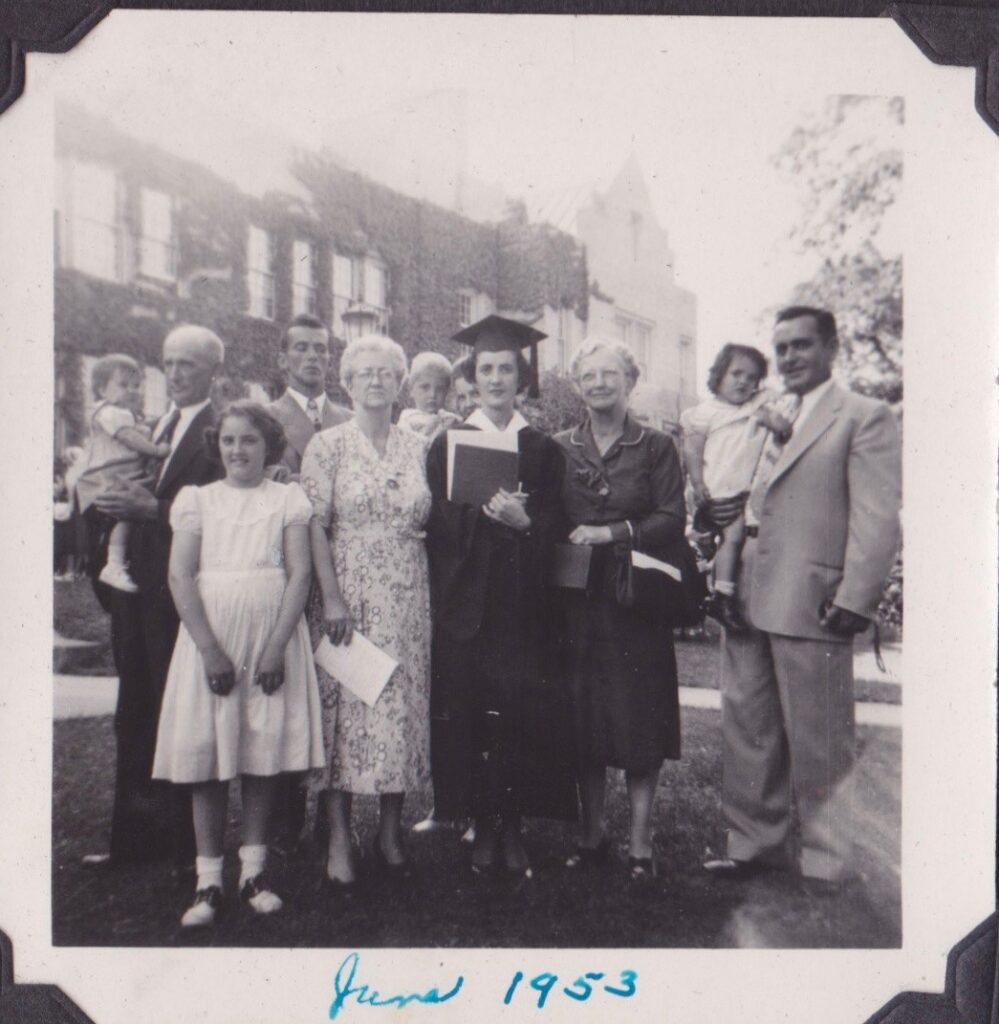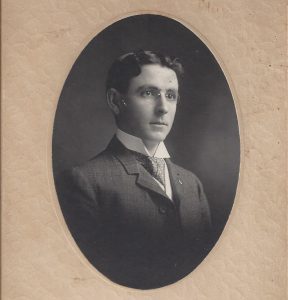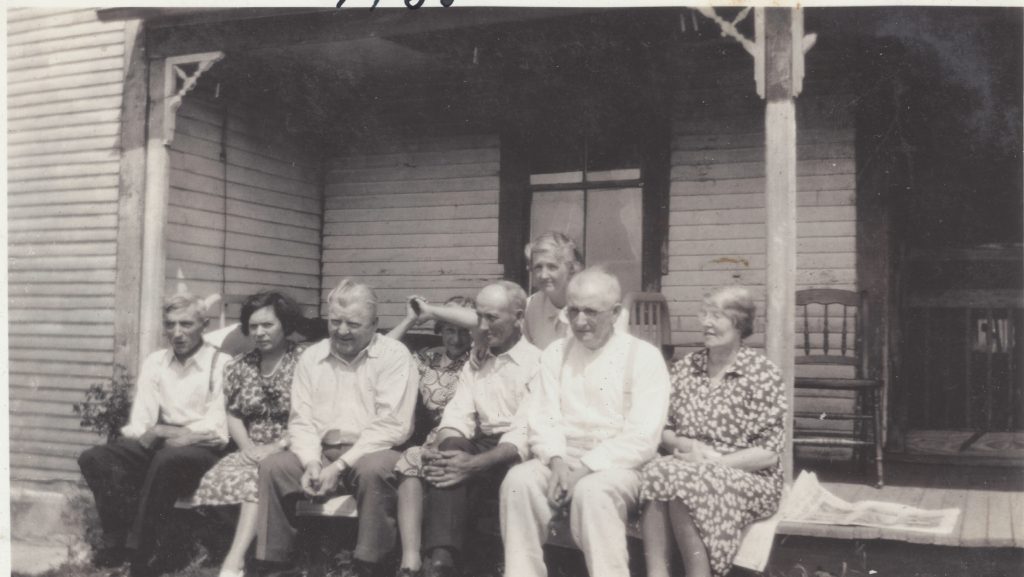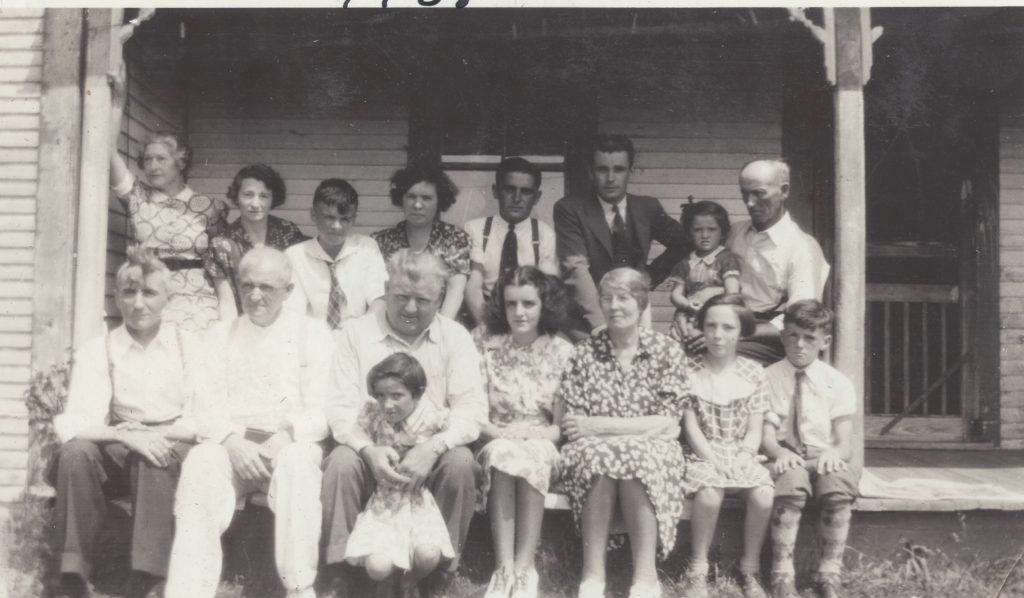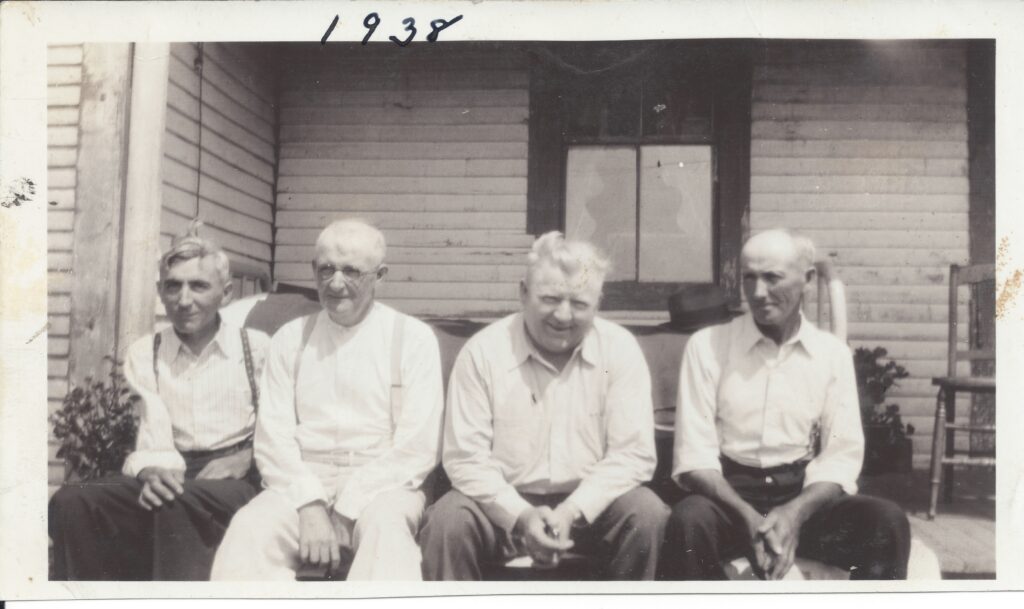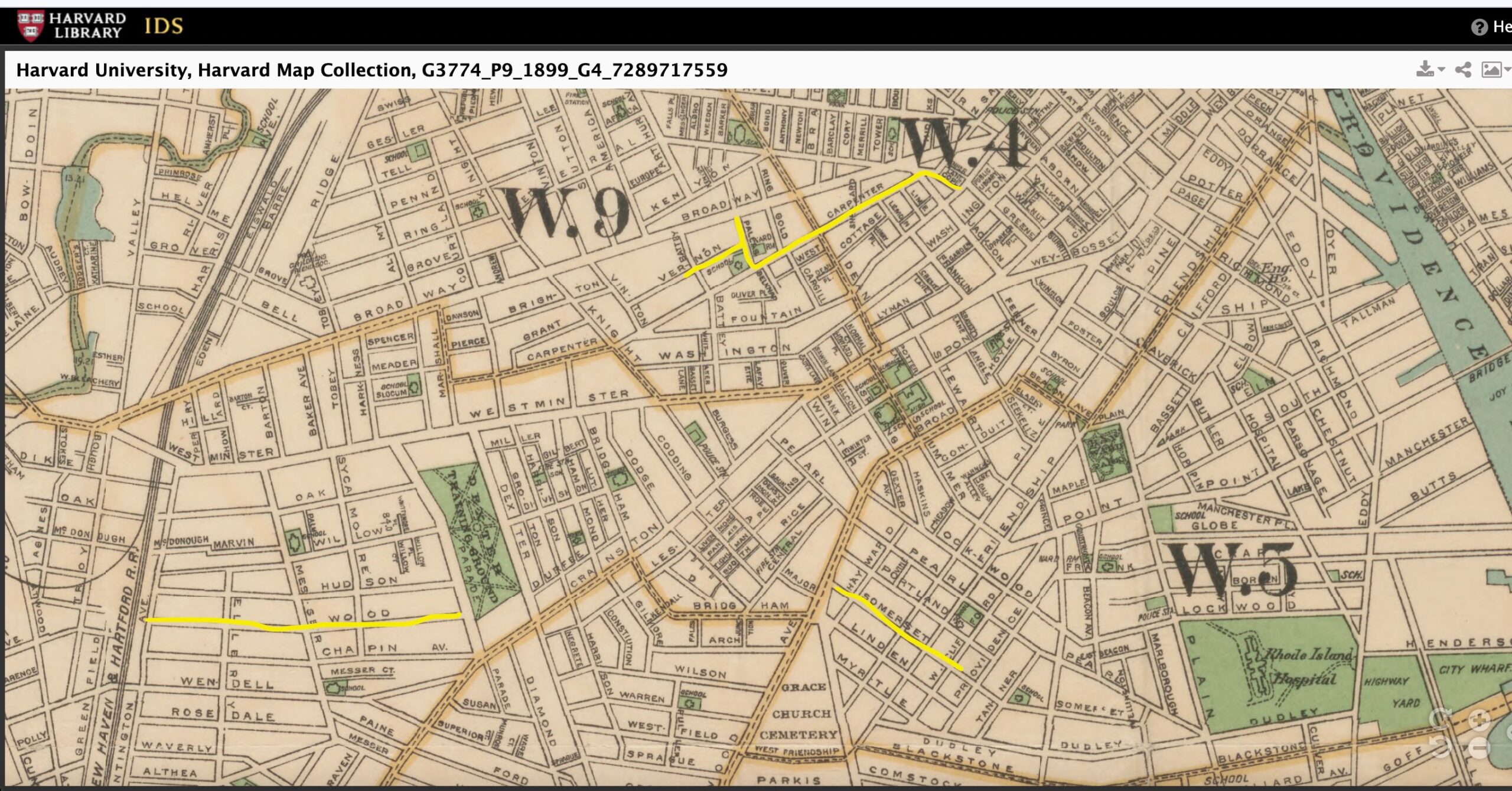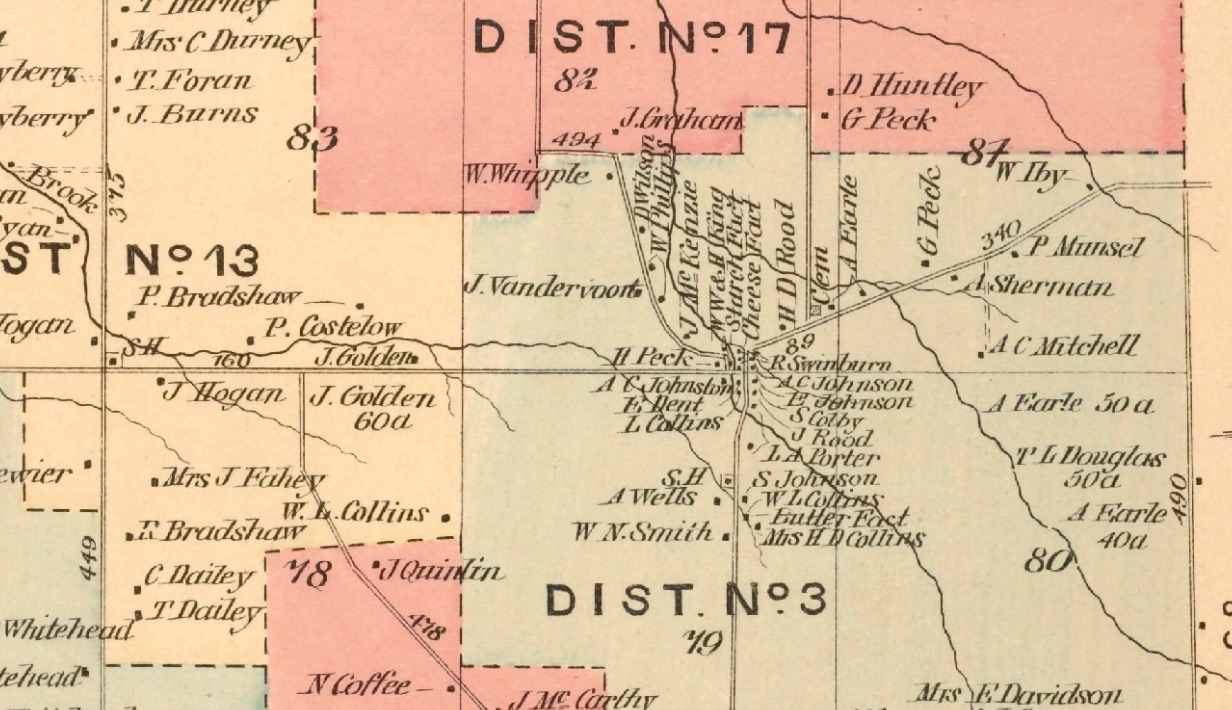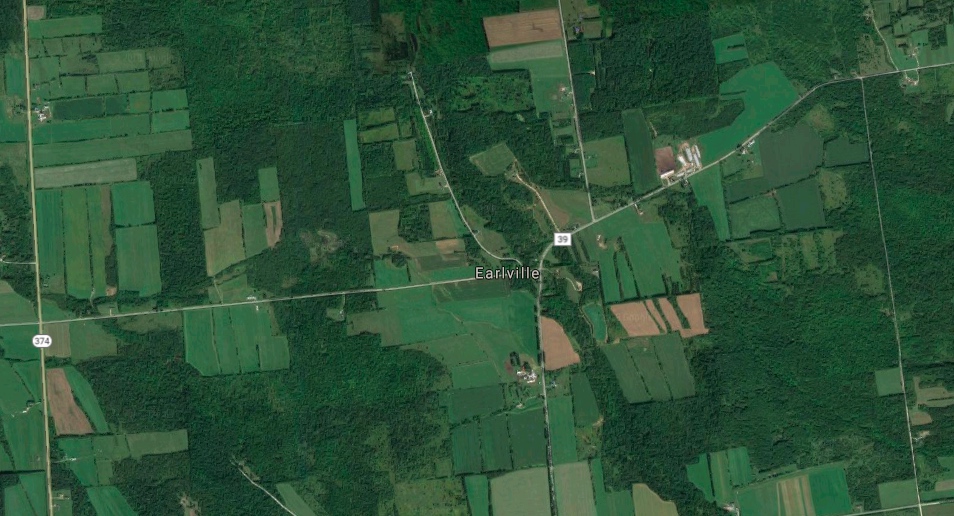Unlike most of the subjects on this blog, I’ve had the benefit of knowing people who knew Pat Bradshaw well, although the information is getting bit fuzzy. Some of these tales and facts are the recollections of a 60 year old man (me) struggling to remember what his older relatives told him 30 or 40 years ago. I also have a couple of precious and all-too-brief documents written by my dad and my Aunt Marie. And last but definitely not least, I have the recollections of some of my older cousins.
Patrick Joseph Bradshaw (my grandfather) was born in Chateaugay, NY on June 15th, 1881. He was the eighth of Patrick and Johanna Bradshaw’s 11 children. At the time of his birth, there would have been eight children under 12 in the Bradshaw household.
In 1890, Pat Sr deeded the farm to Johanna and went west to seek his fortune in the mines, probably at the same time as his eldest son Billy. This left Johanna home on the farm with most of the children. Pat would have been around 9 at the time. Pat Sr was back by 1900 according to the US census.
In 1905, Johanna deeded the farm to Pat. He was 23 or 24 and unmarried, but he was the only one of his generation left at home. The 1905 New York State Census lists Patrick(60) and Johanna (60), Pat(23), and “Adopted Son” Fred Parmer(12). Fred Parmer doesn’t appear in any other records I’ve found, so he’s a mystery.
It’s an enduring mystery of the Chateaugay Bradshaws that out of 11 brothers and sisters, only Pat stayed in the area. Everyone else left for New York city, New England and California.
Johanna died in 1908, leaving just Pat and his father on the farm.
Pat had a difficult relationship with his father. Both my father and my uncle John told me that Pat the elder had a life-long problem with alcohol. When Pat Jr was young, there were Sunday get-togethers with Pat Sr’s Brother Richard and his family, who lived close by. The two brothers would go up to the hay loft and finish off an imperial pint of whiskey (which I imagine would have made the evening milking tough). Later, when Pat Jr. was running the farm his father’s drinking companions would congregate in the barn, making a nuisance of themselves. There was also a family rumor (possibly apocryphal) that Pat Jr had to smuggle liquor for this father across the Canadian border (two miles north of the farm) during prohibition. On at least one occasion, his father disappeared and was later found passed out in a ditch near the Sheehan farm (later the Pat Dwyer farm).
The 1910 census shows Patrick Sr, Pat Jr, and Pat’s sister Katherine, who had moved home from NH after divorcing her husband. Katherine died in 1912.
He married Rosetta Cassidy on February 15th, 1915.
Pat and Rosetta had three children. John Francis (1916-2006), Richard Gerald (1917-1982), and Mary Patricia (1919-1921).
For most of Pat’s life, work on the farm was done without benefit of any power equipment. The farm had electricity, running water and flush toilets as early as late 1920’s, but the first tractor didn’t appear until George bought a used Ferguson in 1954 (side note – I learned to drive on that tractor). Before that they used horses for everything. Marie: “He had the most primitive tools to work with no electric saws, drills or sanders. He made a wooden sled with steel runners to put milk cans on to draw from the milk house to the end of our driveway so the milk driver could pick up our milk in the winter in the morning. “
Pat was close with neighbor Will Dwyer. Will was best man at both of Pat’s weddings.
Mary died of spinal meningitis in 1921. Rosetta died the next year in 1922. After her death, it was just Pat, John, Gerald, and Pat’s father (also named Patrick) living on the farm.
Pat married Henrietta Cassidy (Rosetta’s cousin) September 1st, 1926. You can read more about their wedding day here. Henrietta was a local girl, born in Canada but raised at the south end of town on the Number 5 road. Pat was 45. Henrietta was 31.
Pat and Henrietta had four children: Marie Theresa (1927-1995), George Joseph (1928-2013), Irene Ann (1931-1992), and Rose Annette (1935-2004).
In 1935, after daughter Rose was born, Henrietta was stricken with serious mental illness. The family has always assumed that it was related to Rose’s birth. After a suicide attempt in which she tried to drown herself in the brook on the farm, she was committed to the Ogdensburg Psychiatric Hospital for about six months. This was a hard time for the family. Henrietta’s mother took Rose in for those months. The kids missed their mother terribly. Pat, who was normally stoic about most things, was visibly affected by Henrietta’s illness. My dad said that was the first time he realized his dad loved his mother. Dad recalled Pat traveling to Ogdensburg and coming back alone, saying that she wasn’t ready. She finally came home in time for Christmas. She was better, but Henrietta would struggle with mental health issues for the rest of her life.
Pat Deeded the farm to his son George (my dad) for $5000 and on the condition that he would support Pat and Henrietta, and put his sisters through college.
Pat passed away on October 19, 1959. He had purchased the one-room school house that sat adjacent to his property when the school system was centralized. He was remodeling the school turning it into a dwelling, possibly a retirement home. The state planned to widen the road so the building had to be torn down or moved. According to my dad, Pat was “tearing around doing a lot of things that a 78 year old man shouldn’t be doing.” That night, he had chest pains. The doctor attributed them to torn muscles. Henrietta found him dead in bed the following morning. The wake was held at home. He’s buried in Saint Patrick’s Cemetery in Chateaugay, along with Rosetta, Henrietta and Daughter Mary.
I once asked my dad, “What was he like?”. There was a pause, and dad replied, “He was a hard man”. In a brief autobiography (which will show up on this site some day) dad said the following of Pat: ” Tough old guy. Thoroughly honest. Strict. Violent temper. ” Marie recalled that both Pat and Henrietta were strict parents who seldom showed any affection.
But dad also described Pat as a thoughtful man who enjoyed solitary walks in the woods. Marie said that “Dad read lot even though he may not have received much formal education. He was intelligent, respected and well liked in Chateaugay.”
Over the years, I have asked my older cousins about their memories of Pat. Some found him stern and a bit scary. Others recall sitting on his lap and feeling secure and loved. I have a lovely account from my cousin Patty of Pat telling her how much he loved the blossoms on the apple trees in the yard, and bringing her to get the cows for milking.
I never met Pat. He died in 1959, three years before I was born. I get the impression of a smart, hard-working, complicated man who lived through hardship and tragedy, and was able to hold his family together through a terrible crisis.
Here’s a timeline of Pat’s life.
Thanks for reading. Please leave comments if so inclined. I’d love to hear from you.
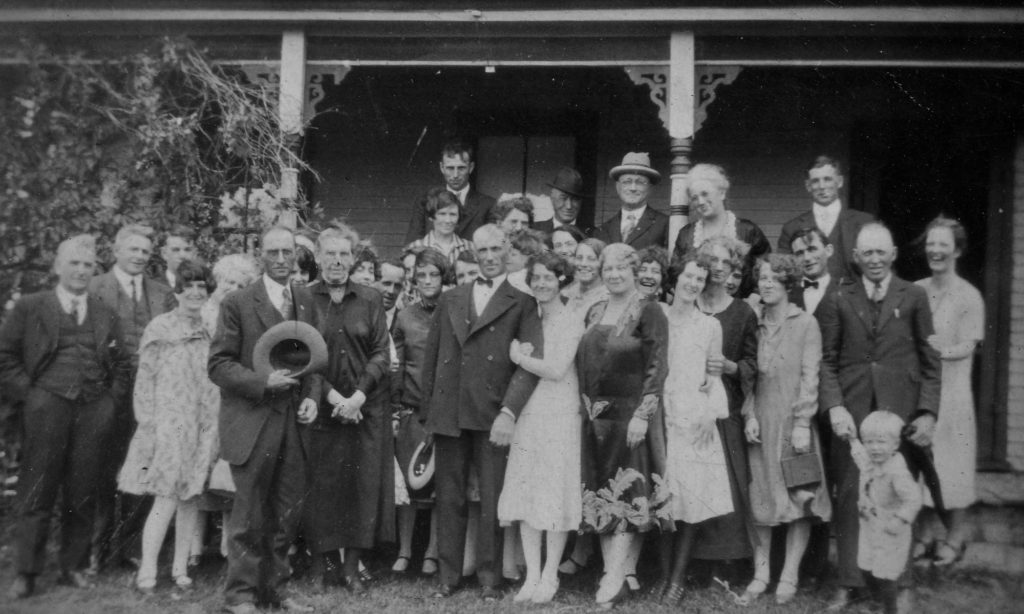
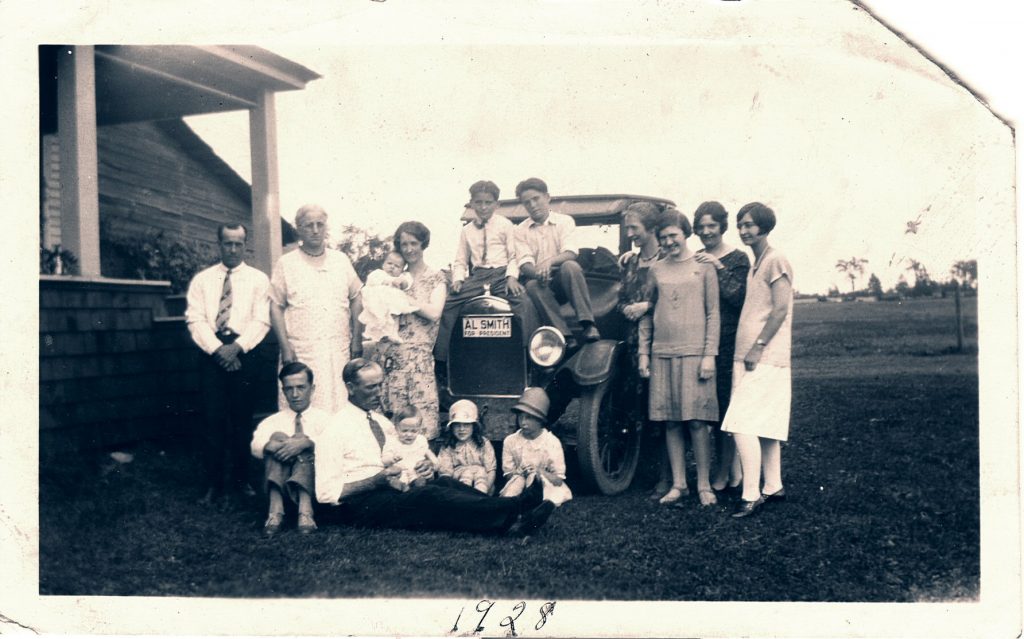
Seated Left to Right Herman(?) Cassidy, Pat Bradshaw, Marie Bradshaw (on lap), ?, Catherine Cassidy.
Left to Right, Rufus Cassidy, Clarinda Patenaude Cassidy, George Bradshaw, Henrietta Cassidy Bradshaw, Gerald Bradshaw (on car), John Bradshaw (on car), Georgina Cassidy, ?, ?, Leona Cassidy.
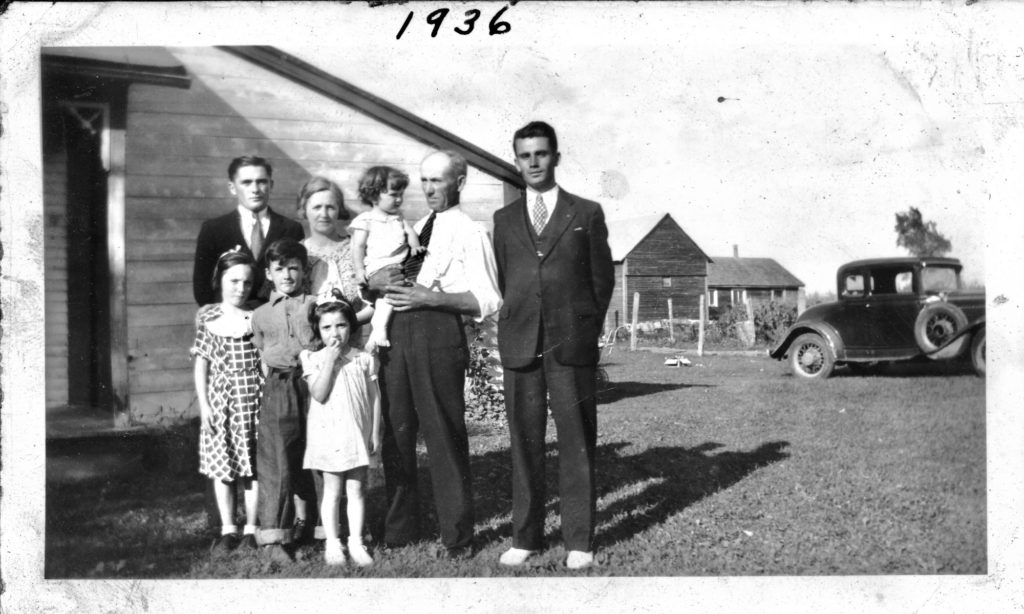
r
